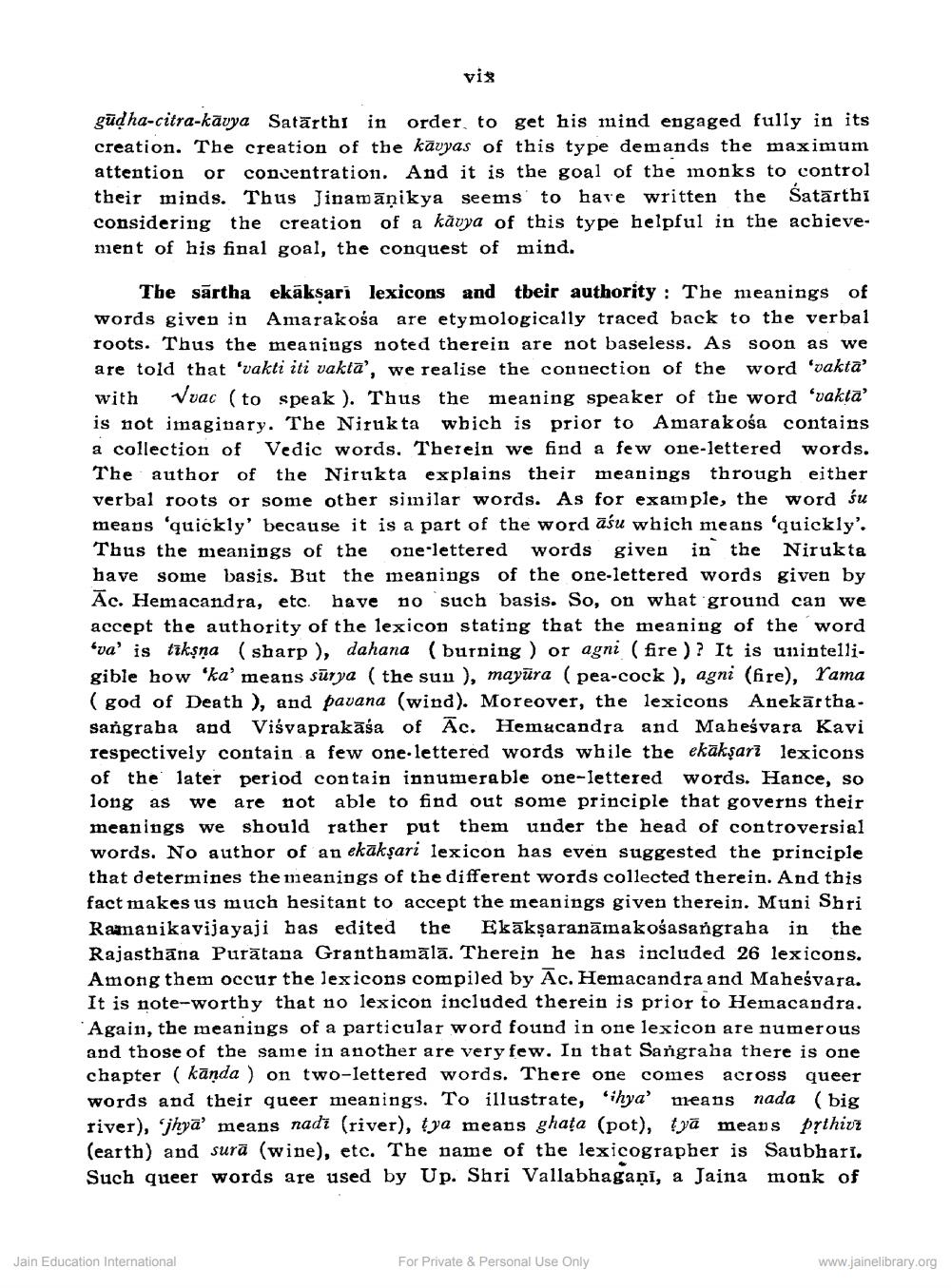________________
vis
gūdha-citra-kāuya Satārthi in order to get his mind engaged fully in its creation. The creation of the kavyas of this type demands the maximum attention or concentration. And it is the goal of the monks to control their minds. Thus Jinamāņikya seems to have written the Satārthi considering the creation of a kávya of this type helpful in the achievement of his final goal, the conquest of mind.
The sārtha ekáksari lexicons and their authority: The meanings of words given in Amarakośa are etymologically traced back to the verbal roots. Thus the meanings noted therein are not baseless. As soon as we are told that 'vakti iti vakta', we realise the connection of the word 'vakta' with Vvac (to speak ). Thus the meaning speaker of the word 'vakta' is not imaginary. The Nirukta which is prior to Amarakośa contains a collection of Vedic words. Therein we find a few one-lettered words. The author of the Nirukta explains their meanings through either verbal roots or some other similar words. As for example, the word su means 'quickly' because it is a part of the word aśu which means 'quickly'. Thus the meanings of the one lettered words given in the Nirukta have some basis. But the meanings of the one-lettered words given by Ac. Hemacandra, etc. have no such basis. So, on what ground can we accept the authority of the lexicon stating that the meaning of the word 'va' is tīkşņa (sharp ), dahana (burning ) or agni (fire)? It is unintelligible how 'ka' means sūrya (the suu ), mayūra (pea-cock ), agni (fire), Yama (god of Death ), and pavana (wind). Moreover, the lexicons Anekārthasangraba and Viśvaprakāśa of Ac. Hemucandra and Maheśvara Kavi respectively contain a few one lettered words while the ekakşarī lexicons of the later period contain innumerable one-lettered words. Hance, so long as we are not able to find out some principle that governs their meanings we should rather put them under the head of controversial words. No author of an ekakşari lexicon has even suggested the principle that determines the meanings of the different words collected therein. And this fact makes us much hesitant to accept the meanings given therein. Muni Shri Ramanikavijayaji bas edited the Ekākşaranāmakośasangraha in the Rajasthāna Purātana Granthamālā. Therein he has included 26 lexicons. Among them occur the lexicons compiled by Ac. Hemacandra and Maheśvara. It is note-worthy that no lexicon included therein is prior to Hemacandra. Again, the meanings of a particular word found in one lexicon are numerous and those of the same in another are very few. In that Sangraha there is one chapter (kānda ) on two-lettered words. There one comes across queer words and their queer meanings. To illustrate, ihya' means nada (big river), jhya' means nadi (river), tya means ghata (pot), trā means prthivi (earth) and surā (wine), etc. The name of the lexicographer is Saubhari. Such queer words are used by Up. Shri Vallabhagani, a Jaina monk of
Jain Education International
For Private & Personal Use Only
www.jainelibrary.org




